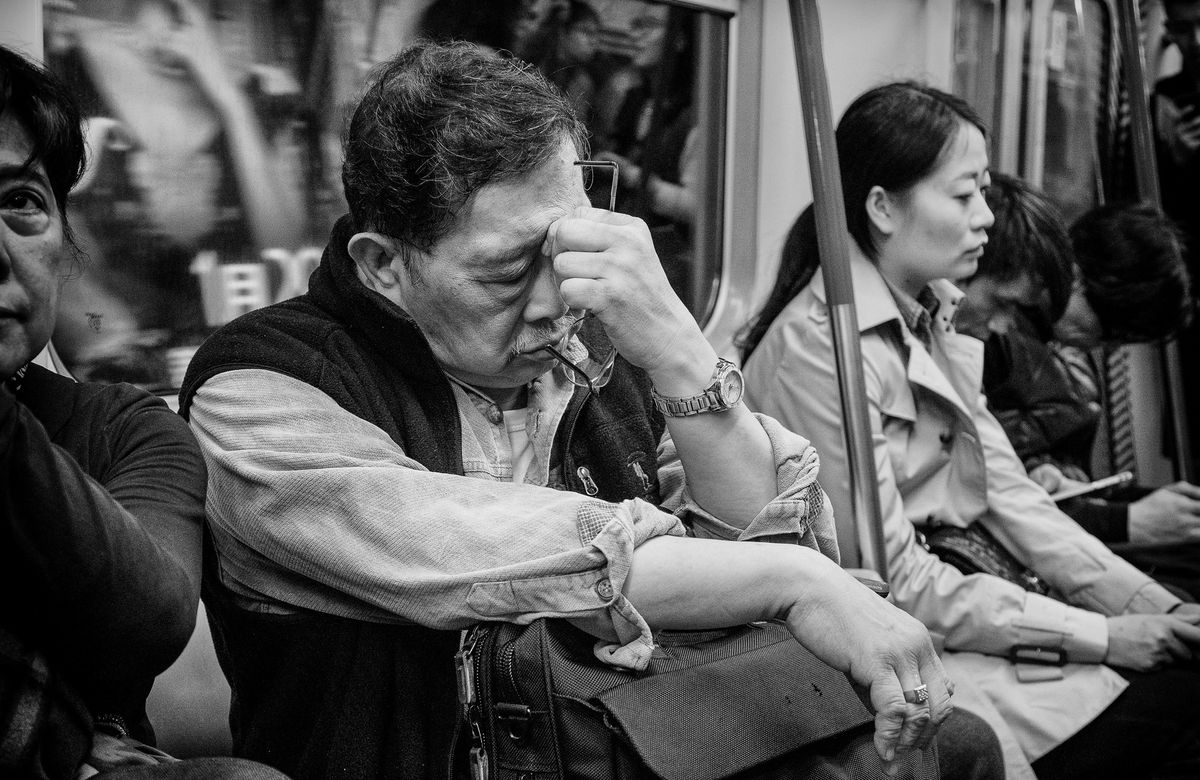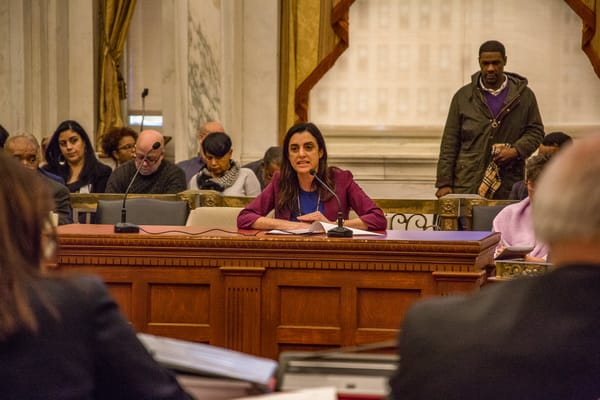Disability and Invisibility

Ashish George’s essay on the hermeneutical injustice of disability is incredibly insightful.* Nothing I say here is intended to undermine that. That said, I contend that a “minority model” of disability—viewing disability as analogous to being female or homosexual—works for many disabled people but it is not a good fit for all disabled people. This model has some important limitations that may support or extend some of the points about hermeneutical injustice made in the original article.
The “minority model” of disability, as I understand it, frames disability as some minor to moderate inconveniences made more problematic by social prejudice. My own experience of disability doesn’t fit well into that framework, nor do I see it as a tragedy to be overcome, though given that I became disabled at 16 via chronic illness, the tragedy model fit better at that time. Disability exists on an enormous spectrum and I think it’s practically more useful to separate the issues of social stigma and how functional a disabled person is relative to “normal” as two separate but important axes.
Social stigma
Let’s start from Disability 101: What is a disabled person? The word disability is usually defined in terms of limitations on a person’s ability to function normally, but if you are disabled the important definitions of disability are social and legislative. I would argue that the limitations people experience due to health problems are a huge and complex spectrum, and “disability” is a subset of that spectrum defined by an ill-informed social consensus and political process.
Consider someone with cancer; most people have been close to at least one person with this disease. Even if you haven’t, the idea of a cancer patient, suffering, drained by chemotherapy until they struggle to function at even a fraction of their healthy capacity is a well-established and rightly sympathetic figure in our cultural consciousness. Are at least some cancer patients disabled? I would say yes, but at what point do they become disabled? What threshold do they cross that transforms them from a sick person into a disabled person? Having to give up work, or use a wheelchair, or having a terminal prognosis? What type and level of limitations do we accept as “disability” rather than “disease?”
The social definition of disability is limited because most people don’t need a sophisticated understanding of disability to live their lives effectively. Unfortunately this tends to mean that some limitations or disabilities experience much more stigma than others. My impression is that almost everyone is comfortable with the black-and-white cases where someone functionally lacks a physical ability that is considered normal. If you are unable to see (blind), or to hear (deaf), or to walk at all (paralysed), then you will be comfortably granted the label of disabled. Call this category 1. People are less comfortable with gray area cases where someone can see a little, hear a little, walk a little, or when the relevant ability is mental (category 2). They’re even less comfortable with the idea of a person being classified as disabled because they’re just bad enough at a large enough number of things to be unable to function in society while still being able to do most of the component tasks to some limited degree (category 3).
Many conditions—often called “invisible illnesses”—involving significant pain, fatigue, and/or mental health symptoms, fall into category 2 or category 3 and are especially prone to stigma. I think part of the discomfort with these kinds of conditions is that people dramatically overestimate their ability to imagine having health problems that manifest as more extreme or constant versions of common problems. Sighted people are aware they have a very limited ability to imagine what it’s like to be blind. But all healthy people experience pain, exhaustion, anxiety, and negative emotions, so they believe they understand what it’s like to have a condition that revolves around these problems. It becomes a matter of trust, and of acknowledging the limitations of your own experience and imagination, to validate such limitations. Many people are openly suspicious or hostile when faced with such conditions in both social and legislative contexts. It’s for this reason that, as having Chronic Fatigue Syndrome/Myalgic Encephalomylitis (CFS/ME), I tend to be careful to talk about “the sick and disabled” rather than just the disabled. Not explicitly claiming the label of “disabled” helps mitigate some of that hostility and encourages more thoughtfulness.
So for many people who are significantly limited by a health condition, it’s not just a matter of being stigmatised for their disability, it becomes a matter of being stigmatised both for their limitations and because they are suspected of illegitimately attempting to claim a label in order to avoid social responsibilities.
Level of functionality
High-functioning sick and disabled people are, by definition, the ones most able to take part in society and work. These are the people with milder instances of health problems, or those with disabilities that are aided significantly by relatively small and inexpensive equipment (e.g. wheelchairs, prosthetics, hearing aids, etc.) or people who can function acceptably well with small adjustments from those around them (e.g., those with less severe forms of depression, Asperger’s, or CFS). This is not to say that high-functioning sick and disabled people don’t still face significant stigma and hardship; they absolutely do. My point is that people who are able to participate fairly fully in society are a particular type of disabled and cannot be taken as representative of disabled people as a whole. High-functioning disabled people are those for whom existing support networks and adjustments work fairly well; they are the public face of disability, the ones with whom everyone else is most familiar and comfortable. If you are healthy, the chances are you’re only seeing the success stories.
There is a whole realm of disability that is not seen because the level of adjustment or equipment required to allow the disabled person to participate is too much or because no amount of adjustment or equipment would allow them to achieve a minimum or practical level of functionality. The fact that the disabled people who can’t participate in society are unlikely to be seen gives a false impression of the success of the status quo and a false sense of expertise in those who interact with high-functioning disabled people.
To use myself as a brief illustrative example of someone with mid-range functionality: One of the main symptoms of CFS/ME is essentially having a tiny capacity for mental or physical exertion when compared to a healthy person. Right now, no equipment or medication has the ability to improve my exertion capacity, and I am limited to somewhere between zero and five hours of active time each day, depending on the day. That active time must be split into chunks of no more than 30 minutes with at least 30 minutes of rest between each chunk. My capabilities are so far outside the norm that significant practical effort and adjustment is required to enable me to participate in most work or most social activities. Even if those significant adjustments were made, my ability to contribute would still be significantly below what could be assumed of a healthy person. My disability doesn’t just complicate my participation in society; it dominates and limits my ability to participate.
This skewed awareness of disability may also not necessarily be combated even if disabled people are directly involved in addressing the issues that concern them. The high-functioning disabled people are those most likely to be able to contribute, and they are correspondingly likely to be used as proxies for all disabled people. But as I’ve already argued, their needs and experiences are not representative and to a certain extent the experiences of disabled people are not strongly generalisable. Many disabled people are not physically or mentally able to be their own advocates and are forced to rely on others to seek out and communicate their needs and experiences.
Disability in the UK
Over the last seven years the UK government has been using a model of disability called the Biopsychosocial (BPS) model of disability, written by Gordon Waddell and Mansel Aylward. This model is arguably closer to the minority group model of disability than the previous system and aims to acknowledge that disability has social and psychological components as well as biological ones. While this may seem laudable, the work is heavily based on the authors’ own non-peer-reviewed papers, it has come under some extensive criticism, and it has resulted in a system rife with victim-blaming and suffering.
On this model, disability has been redefined in a way that significantly increases the level of limitation required and arguably restricts the range of limitations considered. The criteria used to judge who is considered “fit for work” have been dramatically reworked, resulting in many more people being declared fit to work, sometimes against the advice of the medical professionals caring for them. Simultaneously, the government has defunded various programs (e.g., the Independent Living Fund, Access to Work) that supported disabled people in work and absorbed additional costs to employers involved in including disabled workers. They’ve also made some questionable updates to the anti-discrimination policies and what counts as a “disability positive” employer. It is perhaps unsurprising that over this period the UN has declared that the UK government is guilty of “grave or systematic violations of the rights of persons with disabilities” and the government has made little progress towards their target of halving the disability employment gap.
Conclusion
For high-functioning disabled people who the rest of society will acknowledge as disabled, the minority model of disability works very well, especially as a first step to a more sophisticated understanding. For the rest of us, there are risks.
If the social understanding of disability becomes that disabled people only need overcome some prejudice and extra complication to function relatively normally in society there will be increased stigma and hostility for those who are unable to function and those whom society refuses to accept under the umbrella term of disabled. The legislative understanding of disability is inevitably linked to its social understanding, which may be a cause of what is happening in the UK: the definition of disability is being restricted, support is being removed, medical opinion is being discounted, and disabled people are suffering and dying as a result.
The experience of disabled people is inherently difficult to reduce to a standardised, easily absorbed set of issues because disability is so varied in its causes, presentation, and impact. Dealing with disability effectively and safely will always require a customised approach because the risks of forcing a standardised view on disabled people are so large given how vulnerable, fragile, and isolated many of us are.
I will try not to make too many recommendations for how a liberal society should best cope with the difficulties I’ve described because my own experience is no better a proxy for disabled people than any other. I will say that the Internet and the gig economy have huge potential for many people in the mid-range of functionality. For those of us who can use it, the Internet is a source of social interaction; it can also be a source of work. For more disabled people to be able to work effectively I think there will need to be a generally better integration of work, welfare, and taxation, plus an understanding that, for some people at least, standard work hours—with their associated rules and benefits—are too much now and possibly too much ever. In the UK, there are infuriating systematic barriers to low-hour contract work or self-employment if you are also on welfare. This type of work is very flexible and would allow disabled people, many of whom have never had a job, to experiment and see if they can find something they can do safely. If they do find something, it gives them the opportunity to build confidence, experience, and a body of work that can be shown to a potential employer as proof of value. The potential for anonymity in working over the Internet probably wouldn’t hurt either. For those of us who have never been well enough or functional enough to operate within the modal systems of work or never will be, that could be life-changing.
*As an aside before I get into my main argument I’d like to say that, as a fairly old-school liberal with a number of libertarian friends, I could not agree more that “the homogeneity of libertarians permits them to take for granted many assumptions about how the world works that emerge out of a lack of testimonial evidence from people of different backgrounds and an overconfidence in the ability of raw intelligence by itself to surmount all challenges”. I’m used to being the first disabled person someone has ever had a real conversation with, but libertarians seem particularly deflated whenever I explain how my intelligence doesn’t allow me to overcome all barriers presented by my disability or the social systems we live in. However, the libertarian foundational assumption that people are the experts of their own lives does, in most cases, mean they’re refreshingly open to engaging with the experiences of others even when those experiences challenge their assumptions about the world. I find that admirable.
Featured image is Its Been a Hard Day, by David Guyler.




